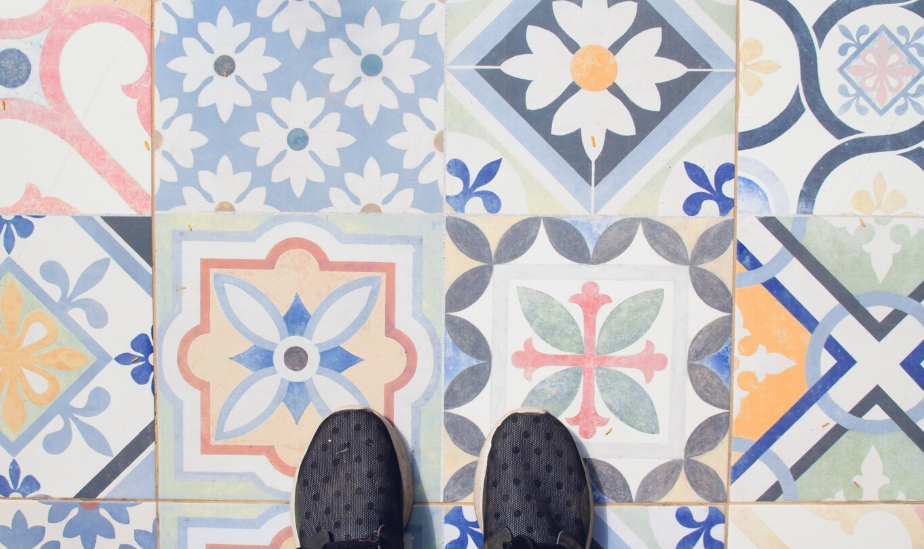- Close Menu

Ready to future-proof your interiors with the tile styles that will dominate 2025?
The right tile trend balances innovation, sustainability, and timeless appeal—ensuring your space feels current without dating itself next season. From eco-friendly materials to bold textures and shape-driven patterns, we’ll explore the six tile directions set to shape homes and commercial spaces alike.
Professional insight and real-world examples will help you select trends that enhance both aesthetics and functionality. Let’s dive into the tile innovations redefining interior design next year.

Terrazzo—once a mid-century staple—has reemerged in sophisticated modern palettes. Designers are specifying fine-grain and large-chip blends in muted earth tones or unexpected jewel hues. Its inherent durability and seamless surface make it ideal for both floors and expansive feature walls. Advances in eco-friendly binders and reclaimed stone chips reduce environmental impact, aligning with green building standards. Whether integrated as an accent countertop or a full-floor application, terrazzo brings artisanal texture and customizability unparalleled by other materials.
Large-format porcelain slabs—and in increasingly slender profiles down to 6 mm—are gaining momentum for their minimal grout lines and sleek minimalism. These tiles can mimic marble, concrete, or wood at grand scales, lending luxury finishes without the weight or maintenance of natural materials. Their slimness facilitates installation on walls, countertops, and even doors, expanding design possibilities. With UV-resistant glazes and high-density engineering, they deliver outstanding strength and stain resistance. As seamless backdrops that emphasize architectural forms, oversized slim tiles are poised to recalibrate spatial harmony.
In 2025, texture moves from matte to tangible relief: 3D tiles with ridges, waves, and modular motifs create dynamic shadow play and haptic depth. Ceramists are experimenting with digitally fabricated molds and hand-applied surface treatments to achieve both uniform repeats and bespoke one-offs. These sculptural elements function as living art installations—perfect for foyer walls, fireplace surrounds, or feature niches. Despite added complexity in grouting, professional installation yields an immersive tactile experience that flat surfaces cannot match. When paired with calibrated lighting, 3D tiles transform static walls into kinetic design statements.
Circular design principles are steering the market toward tiles made from post-consumer glass, porcelain offcuts, and reclaimed aggregates. Brands are launching collections certified by environmental standards, using locally sourced waste to minimize transport emissions. Recycled-glass mosaics in jewel-tone palettes and porcelain tile lines featuring 30–50% recycled content are now performance-rated for commercial and residential use. These eco-conscious options offer both transparency in origin and proven lifecycle benefits, appealing to LEED-focused projects and homeowners committed to conscious consumption.
Bold geometry never truly fades, but 2025 sees a flair for tessellations that reference both Art Deco and contemporary abstraction. Think elongated hexagons, elongated rhombus chains, and kaleidoscopic encaustic motifs in monochrome or high-contrast duos. These patterns are applied in rhythmic layouts—accent borders, checkerboard floors, or full-grid walls—providing visual energy without overwhelming. Advances in digital printing ensure crisp lines and repeat accuracy. Incorporating graphic geometry in transitional spaces like powder rooms or hallway insets adds a curated design moment that elevates the entire home.
The fusion of Japanese simplicity and Scandinavian warmth—Japandi—drives a preference for unglazed stoneware and soft-beige porcelain tiles. Subtle woodgrain textures, sand-colored speckle surfaces, and rice-paper-inspired reliefs create serene backdrops for minimalist furnishings. This trend prioritizes tactile authenticity: matte finishes that feel almost textile-like underfoot. Coordinating tile sizes—from long planks to irregular modular shapes—reinforces the handcrafted spirit. As homeowners seek calm sanctuaries, these natural neutrals will anchor interiors in understated sophistication.
New binders and locally sourced reclaimed aggregates reduce emissions and waste.
Yes—slim profiles bond well to substrates, offering marble-like elegance without heavy support structures.
Many are UV- and frost-resistant—confirm manufacturer ratings for exterior applications.
When installed on properly prepared substrates with full-bed mortar, they resist movement cracks.
Unglazed stoneware benefits from periodic sealing, while porcelain neutrals are typically low-maintenance.
Otto Tiles & Design LLC
7612 NE 4th Ct, Miami, FL 33138, United States
Phone: (786) 460 9098
Email: info@ottotiles.com
© 2025, Otto Tiles & Design LLC, All rights reserved